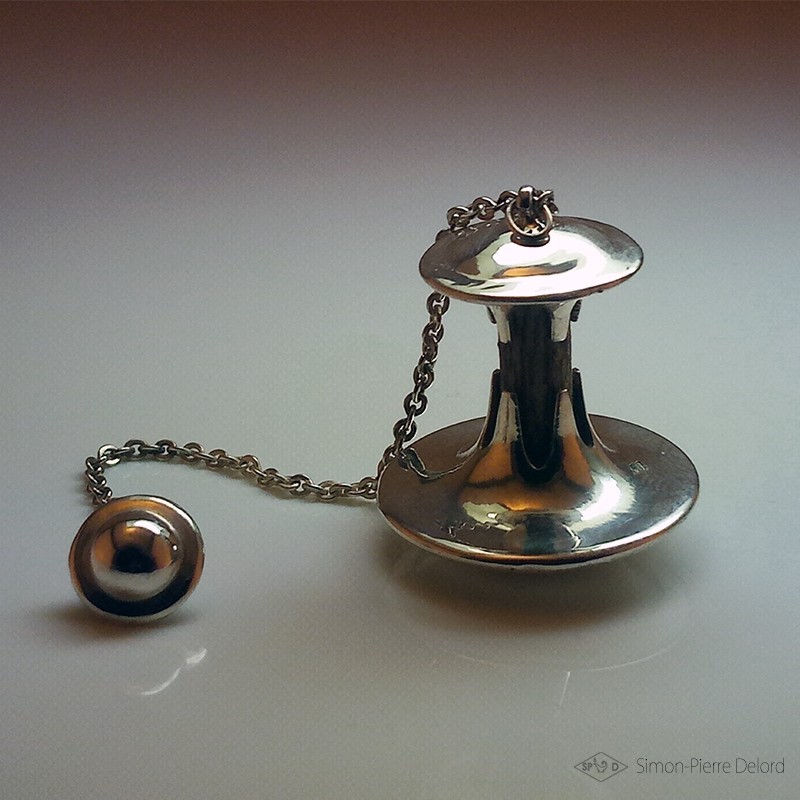







High Jewelry Dowsing Pendulum. Jewelery creation entitled "Low Frequencies". This very particular pendulum was developed in collaboration with several dowsers. Its structure is in Argentium Silver and its internal in Hazel wood. It was specifically developed to amplify low intensity and low frequency oscillations. Made in France in Cordes-sur-Ciel in the Tarn.

Parcel Insurance

Secure Delivery

Return policy
Title: "Low Frequencies"
Specific dowsing pendulum for amplifying low frequencies
Hazel wood core
Argentium silver frame
Weight: 29 grams
Dimensions: Height: 130 mm / Diameter: 26 mm
Dimensions of the gripping ball: Diameter 10 mm / Height: 8 mm
Mobile dimensions: Height: 30 mm / Diameter: 26 mm
Made in our workshop in Cordes-sur-Ciel in France
The original frame made in Argentium silver using the lost wax casting technique.
All the operations necessary for the realization are carried out in our premises: sculpture, foundry, setting as well as polishing
The Hazel or coudrier is the magic tree par excellence. Since antiquity, royal scepters and magic wands have been made from hazelnut. It is difficult to trace the origin of these complex beliefs. We can only say that they are widely spread over time and over a large part of the surface of our planet. The Coudrier is consecrated to the God Thor among the Germans. The emblem of the medical profession, the caduceus, is an elkwood staff surrounded by two snakes and surmounted by two wings. There are many examples.
In Roman times, Mercury would have received from Apollo a staff of an elbow tree which he used to calm the passions of men and improve their virtues (CHGH)
"The young coudier which has not yet produced fruit naturally leans towards the mineral veins" (ROLL)
"It is recommended to plant a hazelnut tree near the entrance of a house to protect the serenity of the home" (DERR)
CHGH: Jean CHEVALIER, Alain GHEERBRANDT, Dictionary of symbols, Paris, (c) R. Laffont, Collection "Bouquins", 1989
DERR: Denis DERRIAD, Amulettes et Talismans, Paris, (c) Solar, 1986
ROLL: Eugène ROLLAND, Faune populaire de la Frabce, Paris, Maison-neuve, 13 volumes, 1877-1915